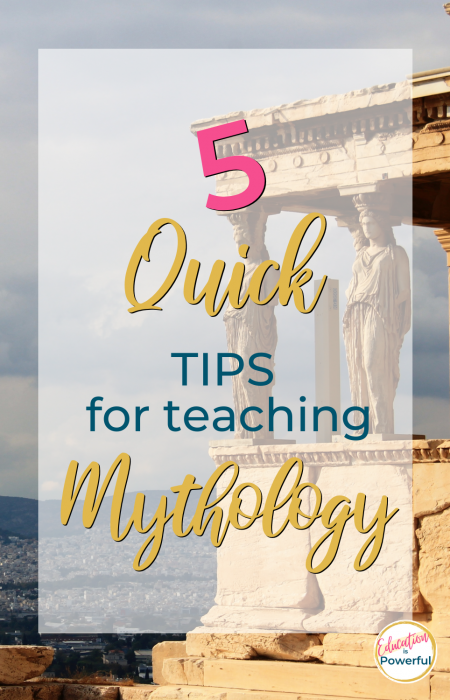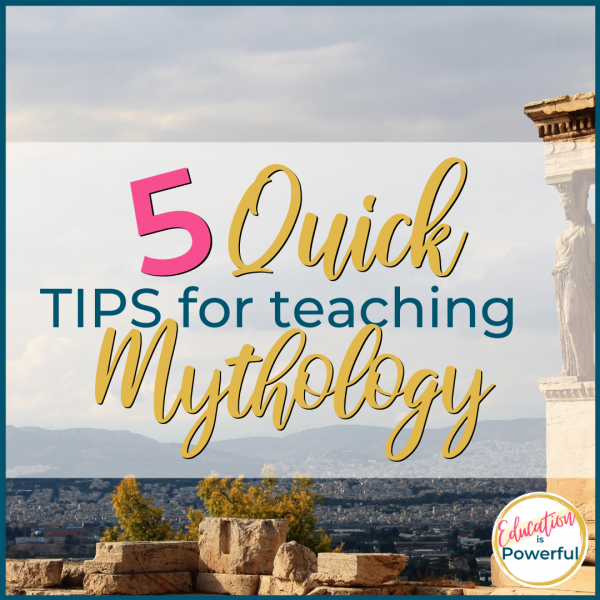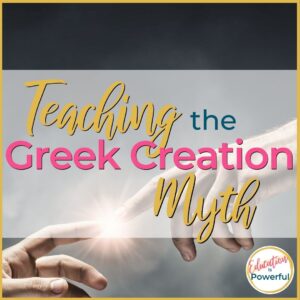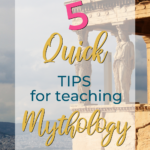Teaching Mythology can feel overwhelming when you first start. The names and hsitory of Greek Mythology or Norse Mythology or any type of mythology can be like being dumped on an alien planet. For teachers it can make you feel like you aren’t a good teacher, but here are 5 quick tips to help you get started with teaching mythology.
Some of the things I mention in this post are also resources I talk about in my post about 4 resources for teaching mythology you might not know about.
1. My first tip for teaching mythology is that you don't need to know everything.
Remember that mythology is an oral tradition. That means that there are quite literally several versions of the myths. Not to mention that once these myths were finally written down, they were written down in snippets.
For example, we get little snippets about Medusa from different sources and in several places within the same poems or epics, like The Odyssey. That is overwhelming. You shouldn’t start by trying to read Ovid to learn a myth. We need to rely on experts.

2. Use Wikipedia and blogs as a resource to help you teach mythology.
What is great about these pages is that someone else has gone to all of the different sources and found the information for you.
Some of my favorite blogs about mythology are:
- GreekMythology.com
- Theoi
- Encyclopedia Mythica
- Mythopedia
- Greek Legends and Myths (I use the A to Z index)
- Myth Web
And if a student says that they heard the myth differently, then you ask them to share what they know. Remind everyone that the myths are an oral tradition and there are several versions. I actually loved having kids share the myths as they know them – I loved hearing their voices retelling the myths in the format and tradition they come from.
3. Tip 3 for teaching mythology: Don’t worry about how you say things
No really. Nobody cares how you pronounce Hecatoncheries or if you say Cyclops or Cyclope(eeeeee)s. And if they do – they are worrying about the wrong things.
So my number 1 tip for names is to decide how you are going to say it, practice it, and say it with confidence.
And then if a student corrects you, say something like, “Thank you. You can also pronounce it that way.” And move on!
4. Embrace reading children’s versions when teaching mythology.
Don’t try reading Ovid, Hesiod, or Homer on your first try. (Even Edith Hamilton and Bulfinch can be difficult at times). There are so many great versions that really hit at the heart of the myth without getting stuck in the weeds and every minute detail in the story.
Some of my favorite are:
- D’Aulaires – Greek Myths and Norse Myths
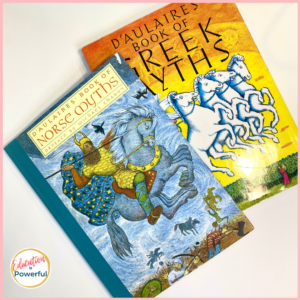
- Rick Riordan’s Greek Gods and Greek Heroes told in the voice and from the perspective of the character of Percy Jackson.

- The Olympians Graphic Novel series by George O’Connor. I suggest starting with Zeus and Athena. They also have the first 6 in a box set.
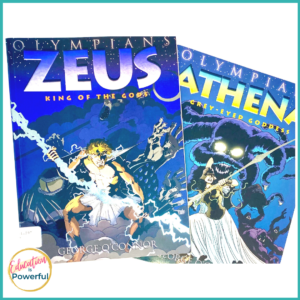
5. Use Media when teaching mythology to engage students.
Greeking Out Podcast – These are great retellings from National Geographic Kids. They retell the myth and share information and vocabulary. They are perfect for upper elementary and middle school. But my high school students enjoy them as well.
Click HERE to get a free student notes sheet with Episode 1 of Greeking Out.
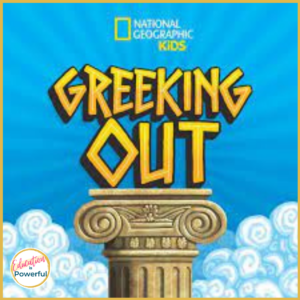
Ted-Ed mythology videos – You can do your own lesson or use the ones that Ted has made for you. HERE is a quick links for you to their videos and lessons about mythology.
Remember these quick tips for teaching mythology and starting your next Greek Mythology Unit will be easier. Often our students love reading myths and learning about the gods and goddesses – use that passion and these tips and dive into your favorite myth.
If you are looking for some quick mythology lessons to get you started, I would love to send you three FREE mythology lessons.
Shop this Post
*Contains affiliate links, so I do make a small commission if you purchase using this link. However, I only include links to the things I love, use in my own class, or books I have in my own classroom library.
